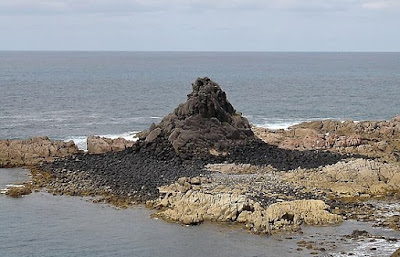The Remarkable Formation of Pyramid Rock
Tourists who head over to Melbourne, Australia sometimes get a notion to visit Pyramid Rock on Phillip Island. This triangular mass is interesting to geologists — especially Genesis Flood geologists. It was not built by human hands, but by several factors including volcanic activity.
You can see the different colors. For the most part, we are seeing basalt perched on granite, which involves different volcanic activity. Secular geologists would agree with biblical creationists that a whole heap of erosion happened, but not on the timeframe or circumstances. Uniformitarian geology does not work, but the activity of the Genesis Flood provides an adequate explanation.
 |
| Cropped from an image on Wikimedia Commons by Pavel Špindler (CC by 3.0) |
To read the entire article, click on "The fascinating geological history of Pyramid Rock, Phillip Island, Australia".The boardwalk to the lookout gives an excellent view of the black basalt columns crammed along the base of the steep cliff. The same columnar jointing is visible in Pyramid Rock in the distance, as well as in most of the headlands and wave platforms that surround the island. And Phillip Island is only part of the area of land that was covered by hot, fuming lakes of molten basalt lava, now referred to as the Older Volcanics.The basalt outcrop in the foreground on Phillip Island itself and the pyramid in the ocean were once connected, but the intervening rock has been eroded away. You can judge something of the depth of a single lava flow from the length of the columns. As you look at these rock outcrops imagine the extent of the lava flow and its depth. Imagine, too, the huge volume of basalt rock that has been removed by erosion since the rocks solidified. This is just one of many lava flows stacked one upon the other that is visible on the island.